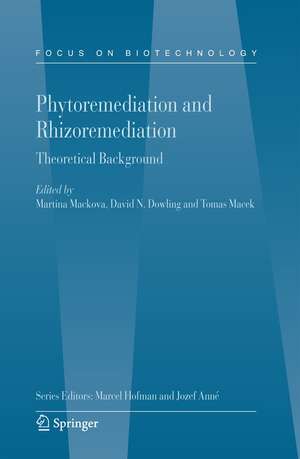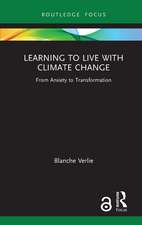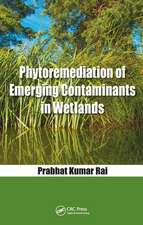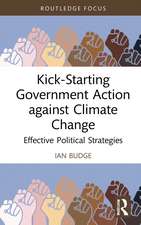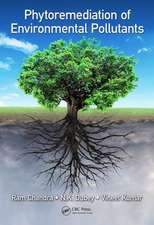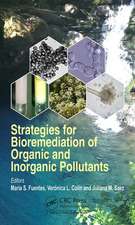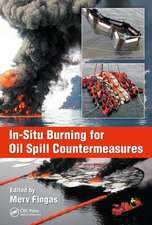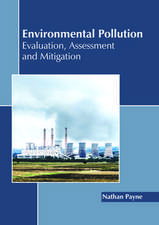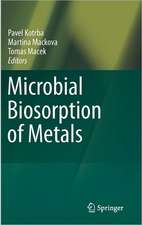Phytoremediation and Rhizoremediation: Focus on Biotechnology, cartea 9A
Editat de Martina Mackova, David Dowling, Tomas Maceken Limba Engleză Paperback – 17 noi 2010
| Toate formatele și edițiile | Preț | Express |
|---|---|---|
| Paperback (1) | 945.14 lei 6-8 săpt. | |
| SPRINGER NETHERLANDS – 17 noi 2010 | 945.14 lei 6-8 săpt. | |
| Hardback (1) | 953.52 lei 6-8 săpt. | |
| SPRINGER NETHERLANDS – 20 sep 2006 | 953.52 lei 6-8 săpt. |
Preț: 945.14 lei
Preț vechi: 1152.61 lei
-18% Nou
Puncte Express: 1418
Preț estimativ în valută:
180.88€ • 188.14$ • 149.32£
180.88€ • 188.14$ • 149.32£
Carte tipărită la comandă
Livrare economică 14-28 aprilie
Preluare comenzi: 021 569.72.76
Specificații
ISBN-13: 9789048172382
ISBN-10: 9048172381
Pagini: 308
Ilustrații: VI, 300 p.
Dimensiuni: 160 x 240 x 16 mm
Greutate: 0.44 kg
Ediția:Softcover reprint of hardcover 1st ed. 2006
Editura: SPRINGER NETHERLANDS
Colecția Springer
Seria Focus on Biotechnology
Locul publicării:Dordrecht, Netherlands
ISBN-10: 9048172381
Pagini: 308
Ilustrații: VI, 300 p.
Dimensiuni: 160 x 240 x 16 mm
Greutate: 0.44 kg
Ediția:Softcover reprint of hardcover 1st ed. 2006
Editura: SPRINGER NETHERLANDS
Colecția Springer
Seria Focus on Biotechnology
Locul publicării:Dordrecht, Netherlands
Public țintă
ResearchCuprins
Volume A: 1. Introduction. 2. The chemical ecology of pollutant biodegradation: Bioremediation and phytoremediation from mechanistic and ecological perspectives. 3. Dendroremediation: The use of trees in cleaning up polluted soils. 4. Methods for rhizoremediation research: Approaches to experimental design and microbial analysis. 5. Constructed wetlands for phytoremediation: Rhizofiltration, phytostabilisation and phytoextraction. 6. Influence of helophytes on redox reactions in their rhizosphere. 7. Exploitation of fast growing trees in metal remediation. 8. Using hyperaccumulator plants to phytoextract soil Cd. 9. Enhanced heavy metal phytoextraction. 10. Enzymes transferring biomolecules to organic foreign compounds: a role for glucosyltransferase and glutathione S-transferase in phytoremediation. 11. Phytoremediation of polychlorinated biphenyls. 12. Metabolism and genetic engineering studies for herbicide phytoremediation. 13. Pesticides removal using plants: phytodegradation versus phytostimulation. 14. Phytoremediation of volatile organic compounds. 15. In vitro propagation of wetland monocots for phytoremediation. 16. Modifying a plant’s response to stress by decreasing ethylene production. 17. Mycorrhizal fungi as helping agents in phytoremediation of degraded and contaminated soils. 18. Assessing risks and containing or mitigating gene flow of transgenic and non-transgenic phytoremediating plants. 19. Human exposure assessment for food – one equation for all crops is not enough.
Caracteristici
One of the first books connecting phyto- and rhizo-remediation There is no phytoremediation without rhizoremediation These closely related topics affect basic processes in contaminated environments Volume 9A contains fewer case studies, but more basic background aspects Newest methodical approaches are explained
